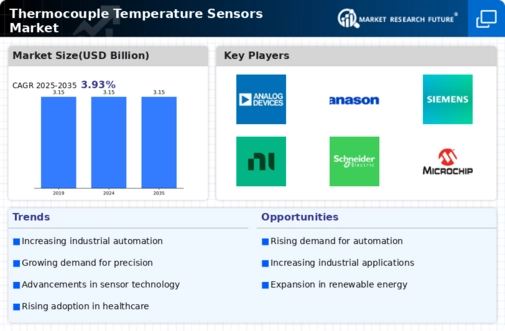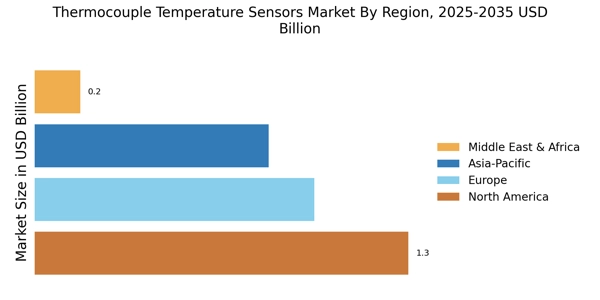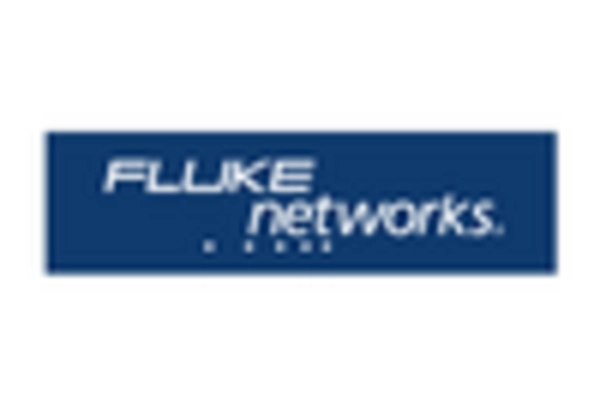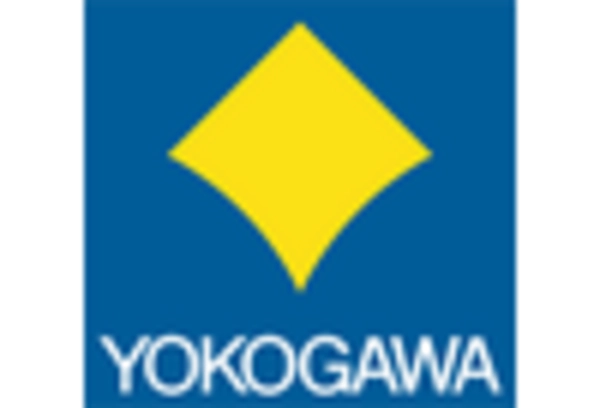Growth in Automotive Sector
The automotive sector's evolution towards electric and hybrid vehicles is significantly impacting the Thermocouple Temperature Sensors Market. As manufacturers focus on enhancing vehicle performance and safety, the need for precise temperature monitoring in various automotive applications has become increasingly important. Thermocouples are utilized in critical areas such as engine management systems and battery temperature monitoring, ensuring optimal performance and safety. The automotive industry is projected to experience substantial growth, with electric vehicle sales expected to rise dramatically in the coming years. This trend presents a lucrative opportunity for thermocouple manufacturers, as their products are essential for meeting the demands of modern automotive technologies.
Rising Industrial Automation
The increasing trend towards industrial automation is a pivotal driver for the Thermocouple Temperature Sensors Market. As industries strive for enhanced efficiency and productivity, the demand for precise temperature measurement solutions has surged. Thermocouples, known for their reliability and accuracy, are integral in automated processes across various sectors, including manufacturing and energy. According to recent data, the automation sector is projected to grow at a compound annual growth rate of over 9% in the coming years, further propelling the need for advanced temperature sensing technologies. This growth indicates a robust market potential for thermocouples, as they play a crucial role in ensuring optimal operational conditions and safety in automated environments.
Increasing Regulatory Standards
The rise in regulatory standards concerning safety and environmental compliance is a crucial driver for the Thermocouple Temperature Sensors Market. Industries are increasingly required to adhere to stringent regulations that mandate accurate temperature monitoring to ensure safety and efficiency. This trend is particularly evident in sectors such as food and beverage, pharmaceuticals, and chemical processing, where temperature control is vital. As regulations become more rigorous, the demand for reliable thermocouple sensors is expected to grow, as they provide the necessary precision and reliability to meet compliance requirements. This regulatory landscape creates a favorable market environment for thermocouple manufacturers, as companies seek to invest in high-quality temperature sensing solutions.
Advancements in Sensor Technology
Technological advancements in sensor technology are driving innovation within the Thermocouple Temperature Sensors Market. The development of new materials and designs has led to enhanced performance characteristics, such as improved accuracy, faster response times, and greater durability. These advancements are particularly relevant in high-temperature applications, where traditional sensors may falter. The market for temperature sensors is anticipated to grow significantly, with estimates suggesting a valuation of several billion dollars by the end of the decade. As industries seek to adopt cutting-edge technologies, the demand for advanced thermocouples that can withstand extreme conditions is likely to increase, positioning them as a preferred choice in various applications.
Expansion of Renewable Energy Sources
The shift towards renewable energy sources is significantly influencing the Thermocouple Temperature Sensors Market. As countries invest in solar, wind, and other renewable technologies, the need for effective temperature monitoring becomes paramount. Thermocouples are essential in these applications, providing accurate temperature readings that are critical for the efficiency and safety of energy systems. The renewable energy sector is expected to witness substantial growth, with investments projected to reach trillions of dollars in the next decade. This expansion creates a favorable environment for thermocouple manufacturers, as their products are increasingly utilized in the monitoring and control of renewable energy systems, thereby enhancing overall energy efficiency.

















Leave a Comment